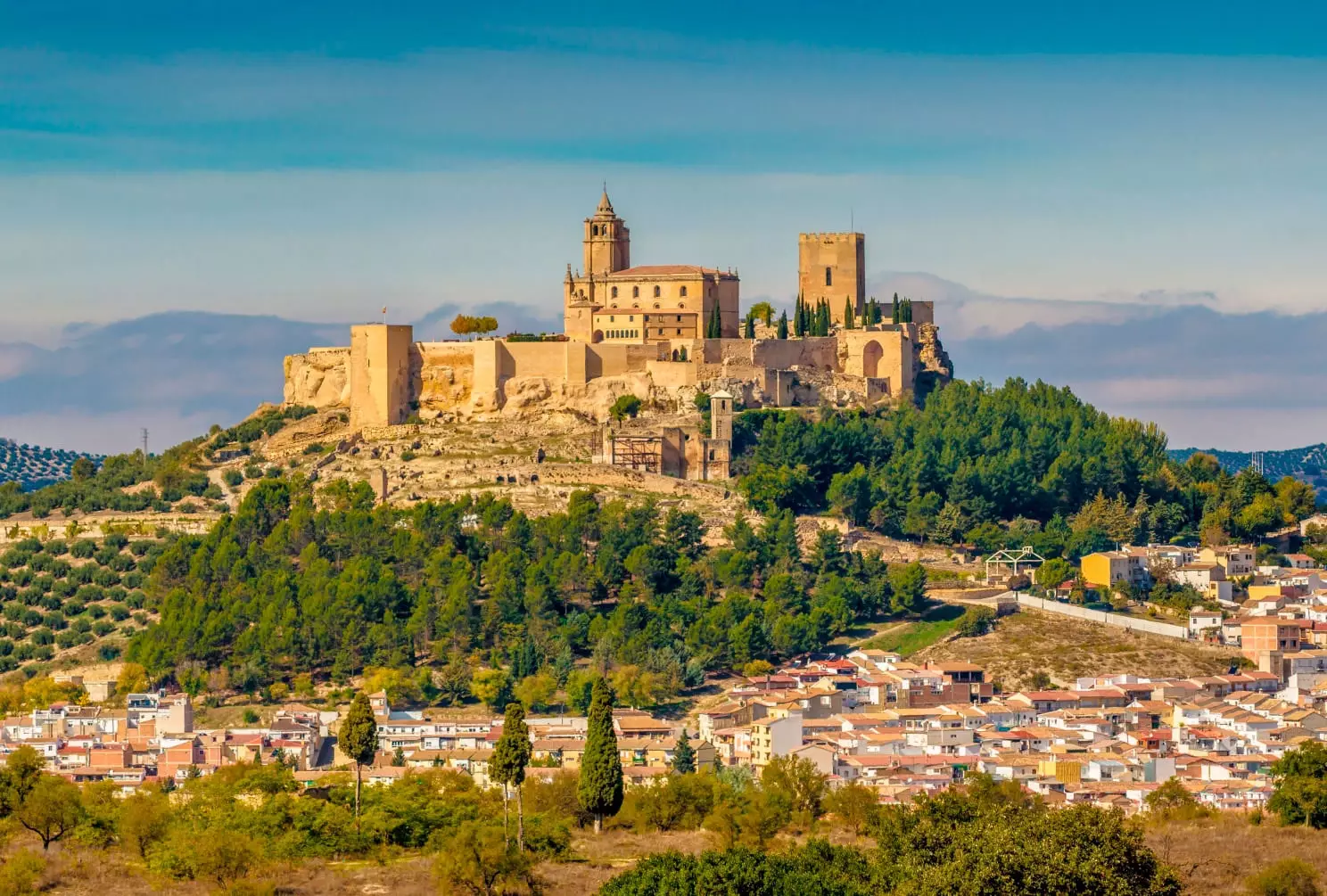
La Mota captures all eyes as we approach Alcalá la Real
We never - we insist, never - imagined that we were going to find a place like this. Although it is true that when the N-432 gets closer to Alcalá la Real, and the imposing silhouette of the Fortaleza de la Mota appears on top of the hill, Well, hey, you sense something. At least it is clear to you that this is not just any place.
And it is that, indeed, La Mota captures all eyes. It is what marks the character and idiosyncrasy of this coquettish town in Jaén with a past full of great stories. A stamp of which its inhabitants are so proud that they could count on the fingers of one hand the homes that do not have their photograph presiding over the room.
Nestled between fields of olive trees and the mountains that are the protagonists of the Sierra Sur region, Alcalá was coveted by Muslims and Christians, who, knowing of its strategic position between the Kingdom of Granada and Castile, disputed the enclave for centuries. Land of Frontiers, they call it. And yes, it always was.
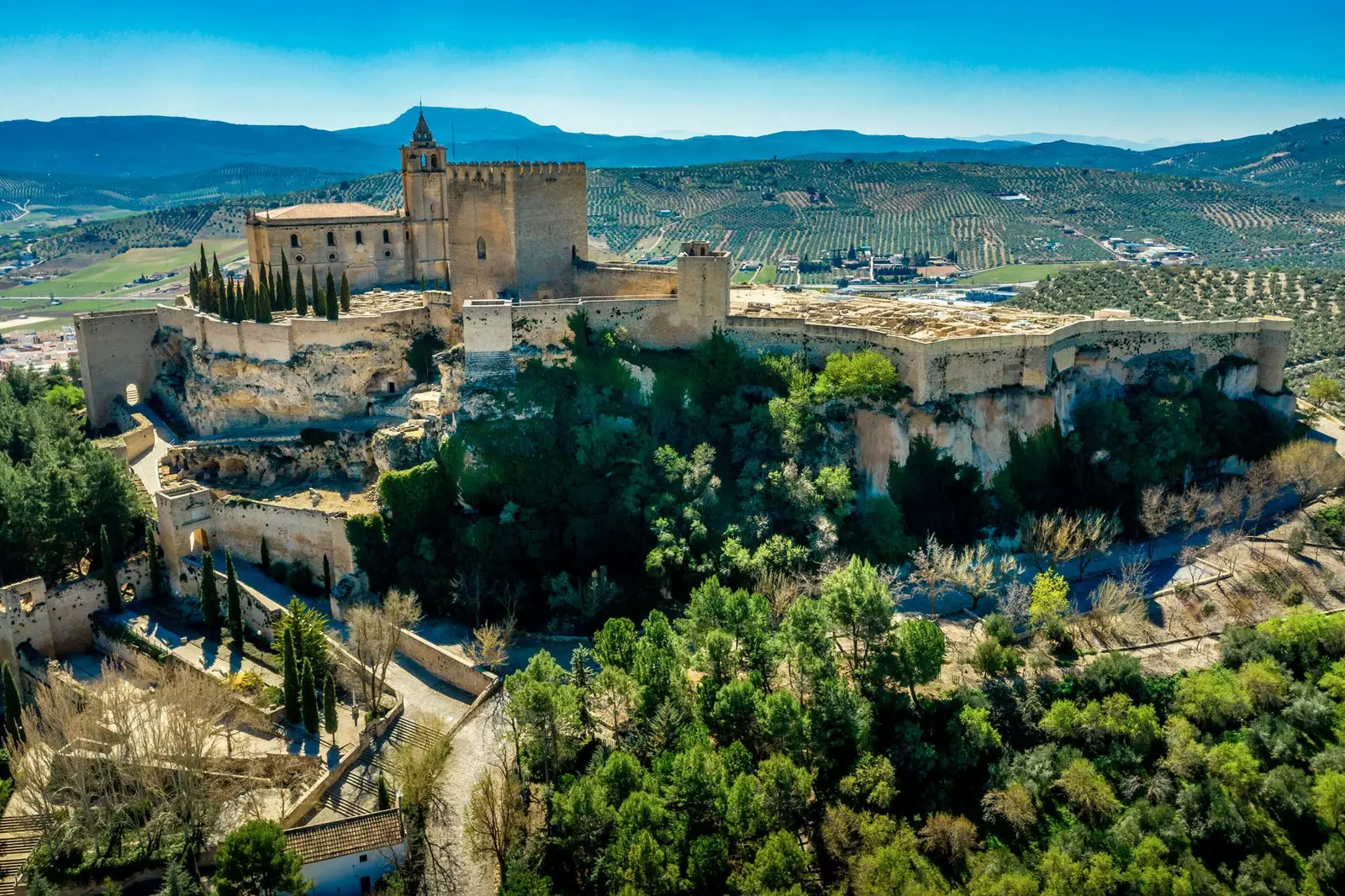
Land of Frontiers, they call it
LET'S START WITH JOY
While we decide to get our act together and go up the narrow streets of the Cerro de la Mota neighborhood, we opt to have a very cold Mariloli. Yes, with a view. And it is that we have planted ourselves, as well as those who do not want the thing, on the other hill, Las Cruces, to know Tierra de Frontera —of course—, a craft beer factory with a Jaén accent that can boast of being the first to be created in all of Andalusia. Not a bad cover letter, don't you think?
It saw the light in 2009 and behind its name there are two great ones: Adora Villegas and Pedro Gutiérrez, who bet on a business that they were passionate about when this world was still unknown in these parts. Today they show off their achievements and do not hesitate to show their small factory to those who visit them.
The best proposal? Sit on its terrace-viewpoint and taste any of its varieties, be it a Golden Ale —the Mariloli, of course—, a Pale Ale —Tierra de Frontera—, a Brown Porter —Piconera—, or an Ipa —Malalmuerzo—. With a more than peculiar brand image, here everything tastes like glory.
AND NOW YES: THE MOTA
We were taking too long to climb the great emblem of Alcalá. Describing its history would give us several articles, but as our duty is to summarize, we tell you: As soon as we cross what is one of the most important walled enclosures in Andalusia, we automatically jump back in time.
And we travel to the time of Muslim rule, in the middle of the Middle Ages, when news of Alcalá began to be heard —although even prehistoric remains have been found in the area—.
Called Qal'at in 713, its double wall was built adapting to the cliffs and rocks of the hill in what was a complete engineering work: thus became an absolutely unassailable target. So much so that no battles were ever fought around it.
The conquest by the Christians, at the hands of Alfonso XI, was carried out in 1341 by siege. After digging tunnels to reach the wells that supplied the Arabs with water and contaminating them, they had no choice but to surrender: Alcalá became the last frontier with the Kingdom of Granada.
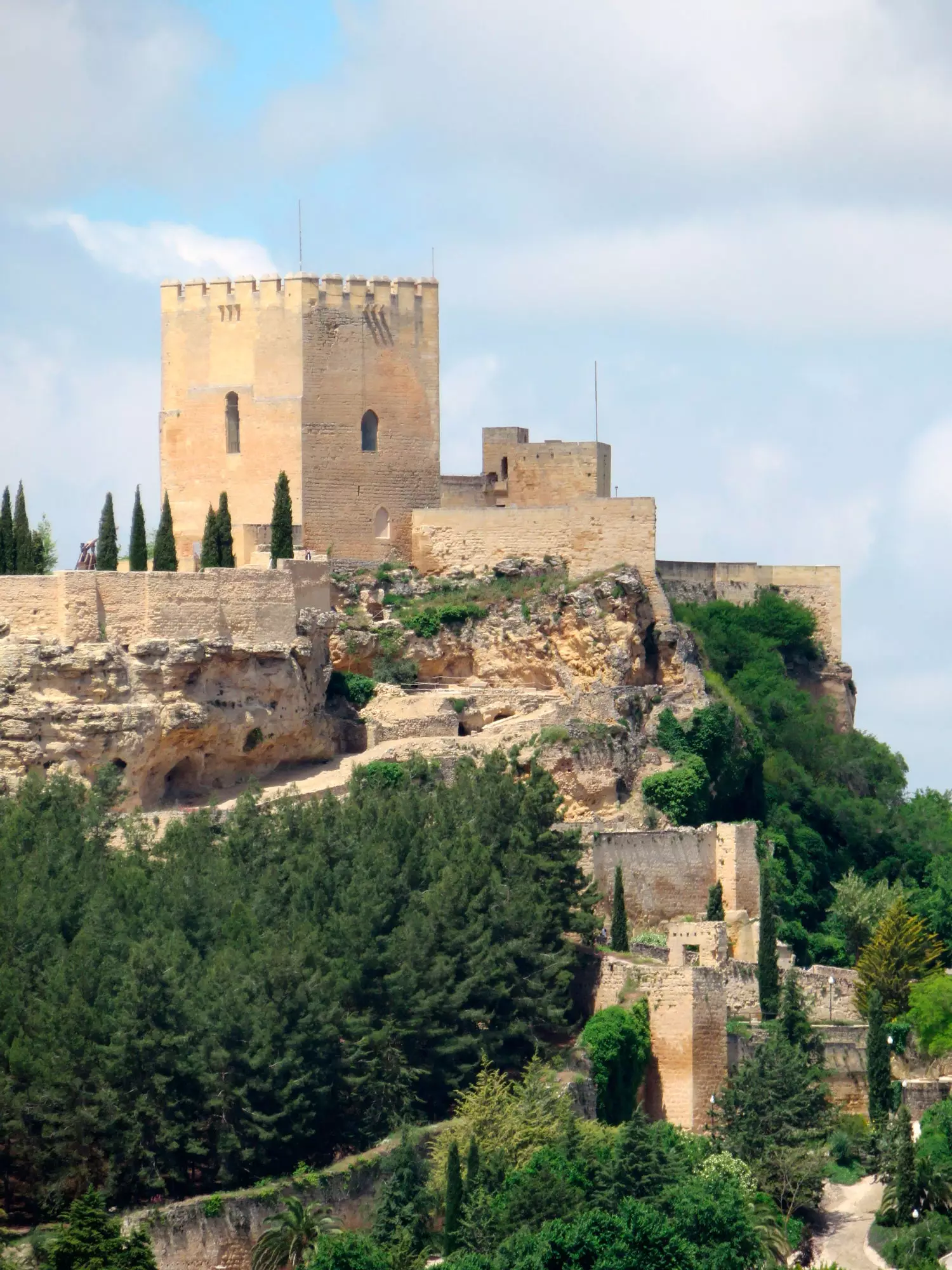
The weed
Precisely those secret galleries that had been hidden for centuries, were rediscovered in 2015 and tidied up so that today we enter the fortress in this fascinating way: the Hidden City is one of the possible guided visits to La Mota, a 150-meter climb between steep and narrow passageways that leads us to cross the bowels of the hill and to reach, self-absorbed, its interior.
Once in La Mota we walk through the old Alcazaba with its three towers: the Homage, the Bell and the Vela. Also the surprising urban layout with its houses and cellars, cisterns and gates, walls, and its greatest treasure: the Abbey Church of Santa María la Mayor, one of the jewels of the Renaissance in the province of Jaén, built by the Christians where there used to be a mosque.
When we cross its door we are surprised again: gothic and renaissance details still remain, and this despite the fact that in the 19th century the French passed through it, destroying everything in their retreat. In its last stage, It was used as a cemetery, something that lasted until 1950: there are still traces of that time on its floors.
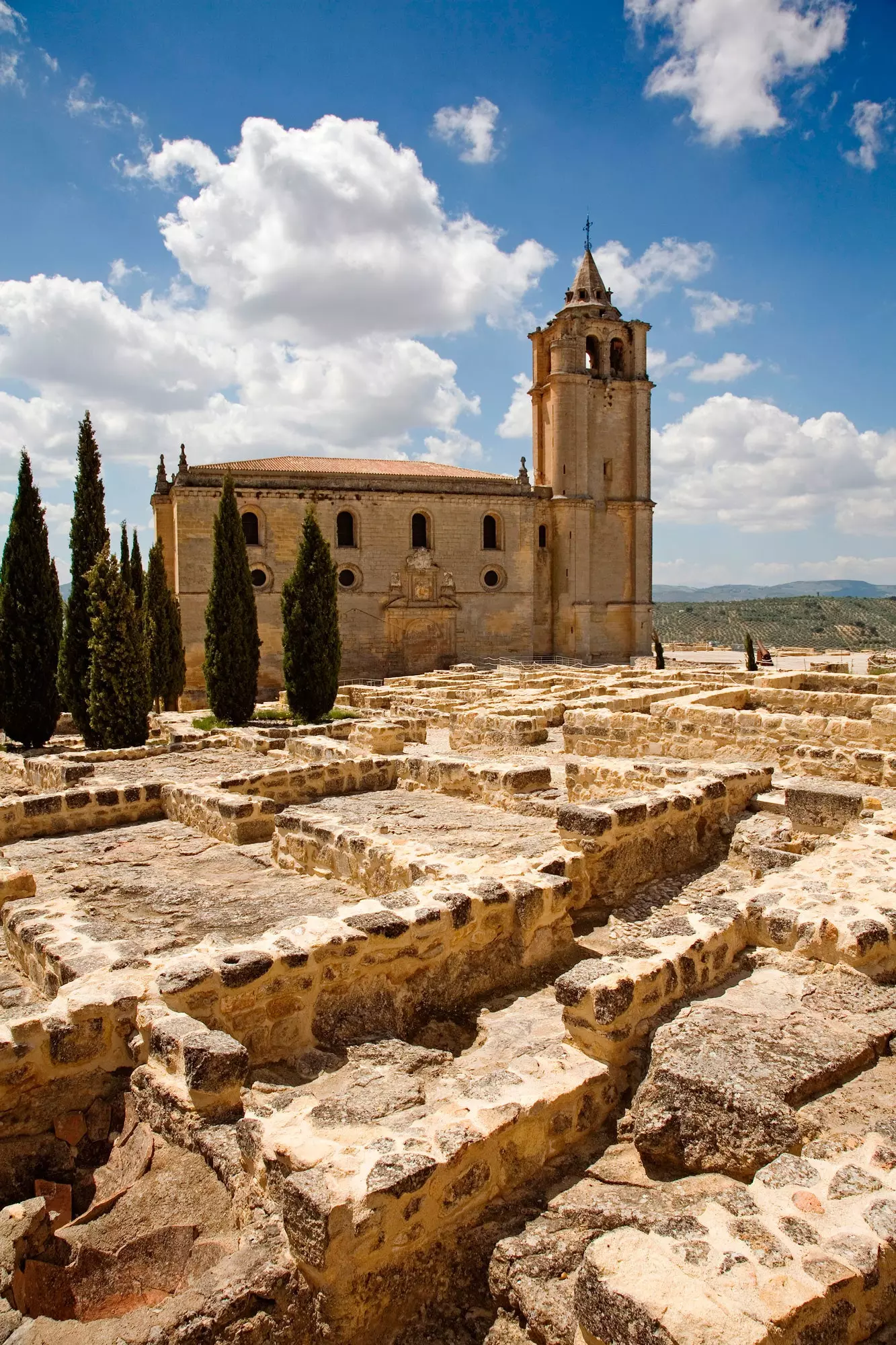
Abbey Church of Santa Maria la Mayor
EL LLANILLO: THE NEW HISTORY OF ALCALA
After the reconquest of Granada there was no longer anything to fear, so the people of Alcala began to move to the outskirts of the walled area, leaving it uninhabited. The town began to spread along the eastern slope of the hill, reaching the area known as 'Llanillo', and continued to grow along the Cerro de las Cruces.
The last to move was the Abacial Palace, which today houses the interesting Archaeological Museum in the middle of Carrera de las Mercedes. with pieces as striking as those exhibited in the Sala del Tesorillo: a treasure from the Caliphate period made up of a pair of earrings and a whole collection of coins.
At this point, it's time to walk. Recreate ourselves in the many other attractions that make Alcalá la Real a unique place. Thus we know the history of his illustrious sons, such as Martínez Montañés or Pablo de Rojas, great Andalusian image makers.
Also that of the Archpriest of Hita, who some argue was from here. In fact, a square with his name houses the town hall building, whose moon clock is worthy of contemplation.
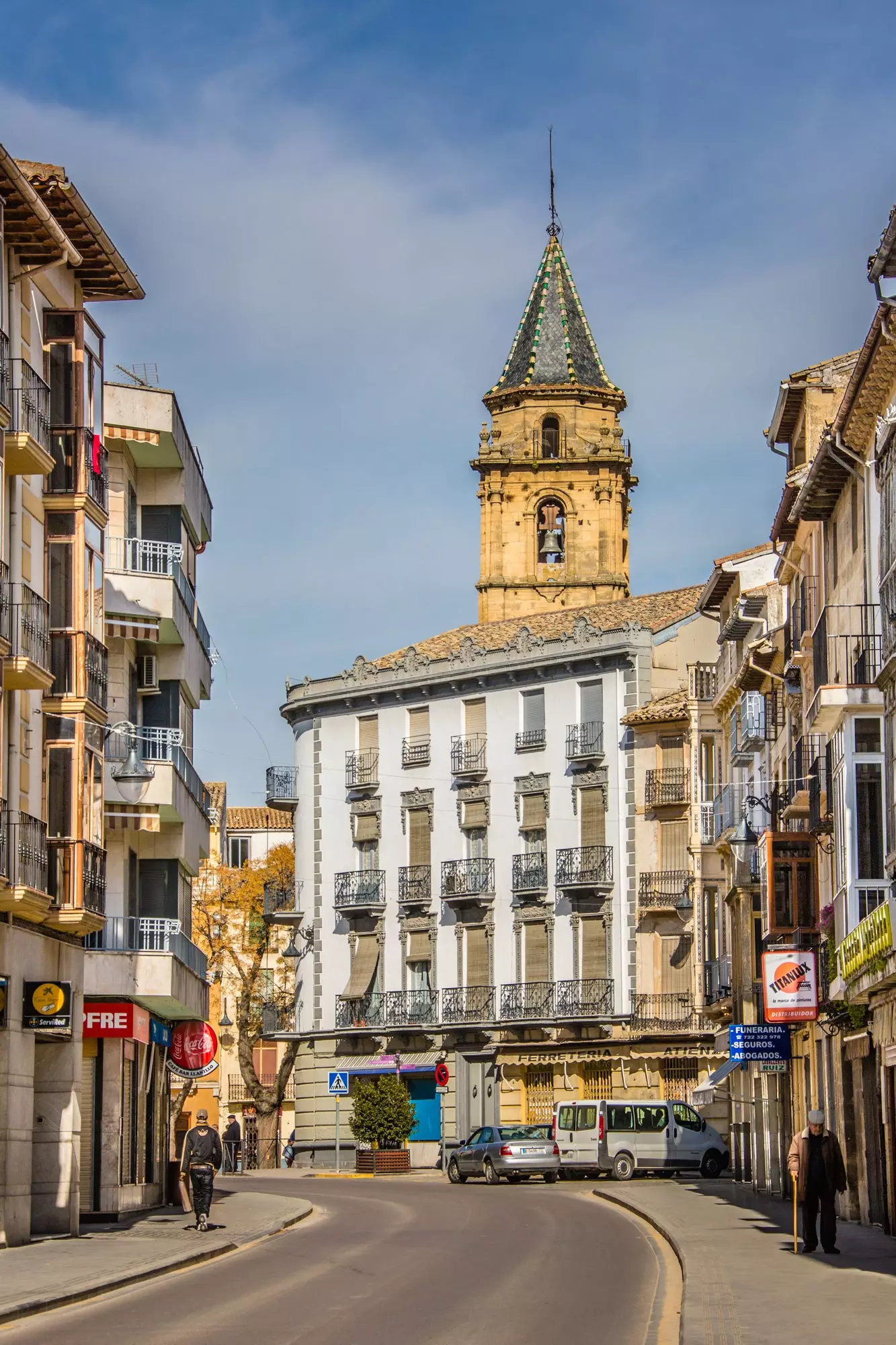
The 'Llanillo': the new history of Alcalá
But the uniqueness of Alcalá can also be seen in the immense number of modernist buildings , which here was influenced by Andalusian regionalism. Most of these mansions belonged to merchant families who, since the end of the 19th century, formed the Alcalá bourgeoisie. Rounded lines and allusions to elements of nature are key in the design.
A clear example is the Palacete de la Hilandera, designed in 1897 by Manuel López Ramírez. A wedding gift from a merchant for one of his daughters, over the years it went through various phases until it was almost abandoned, functioned as a furniture store and suffered great deterioration.
Today it is owned by a married couple who ran a business in front of the house. and that he decided to dedicate his savings to buy it and recover it, thus sharing the benefits of Alcalá with the world.
We are not only won over by the mansion's extraordinary beauty, embodied in details such as its hydraulic floors, the fired stucco on the stairs or its hand-painted ceilings. So do its fascinating rooms: original and period furniture decorate living rooms, bedrooms, the kitchen or the bathroom.
Some rooms have been dedicated to exhibitions on local crafts, while in its courtyard, from time to time, lyrical performances worth witnessing.
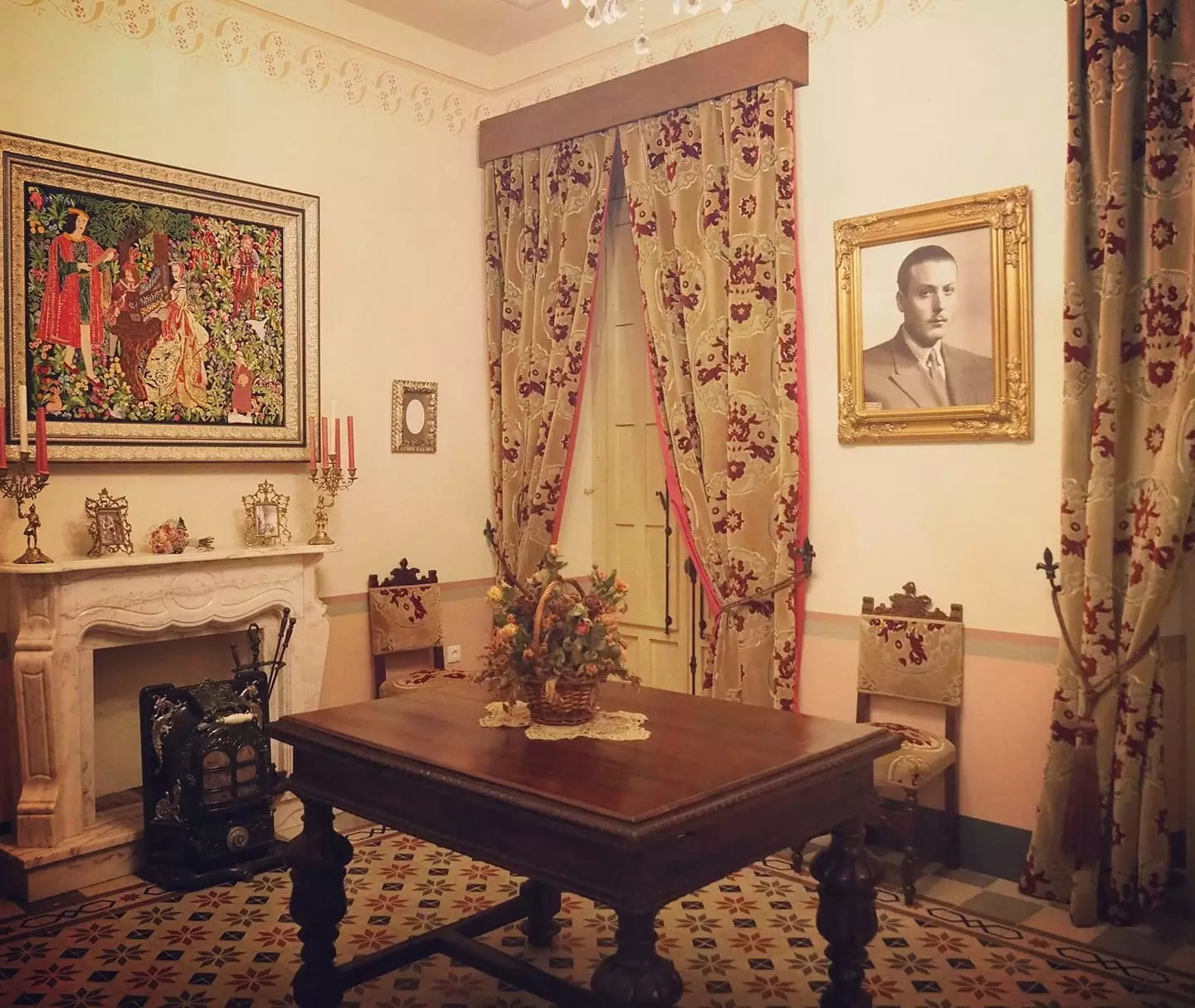
Palace of the Hilandera
STOP AND FONDA?
It was time to taste the flavors of this land where, of course, virgin olive oil is the great protagonist. In Pepe's Corner we realize: the first thing they offer us is a couple of dishes with two types of Premium olive oil, Malacasta and Ágape, to dip bread
Pepe, former player of the Alcalá soccer team, He changed the goalkeeper gloves for the apron and for years he has been delighting his clients with his dishes. we tried the Secretary from Alcala, a delicious classic based on a sauce of vegetables, wine and chicken. Their aubergines with cheese and honey are, as they say in the south, "to yell at them" because of how delicious they are.
Meanwhile, another large-scale project is approaching these lands. La Trinidad, an old restored convent at the foot of La Mota, has been transformed into a gastronomic space in which it is not only possible to know the local product; It also has a restaurant area in which tastings are held, tastings, and in which Great renowned chefs such as Daniel García Peinado will punctually offer their creations through tasting menus.
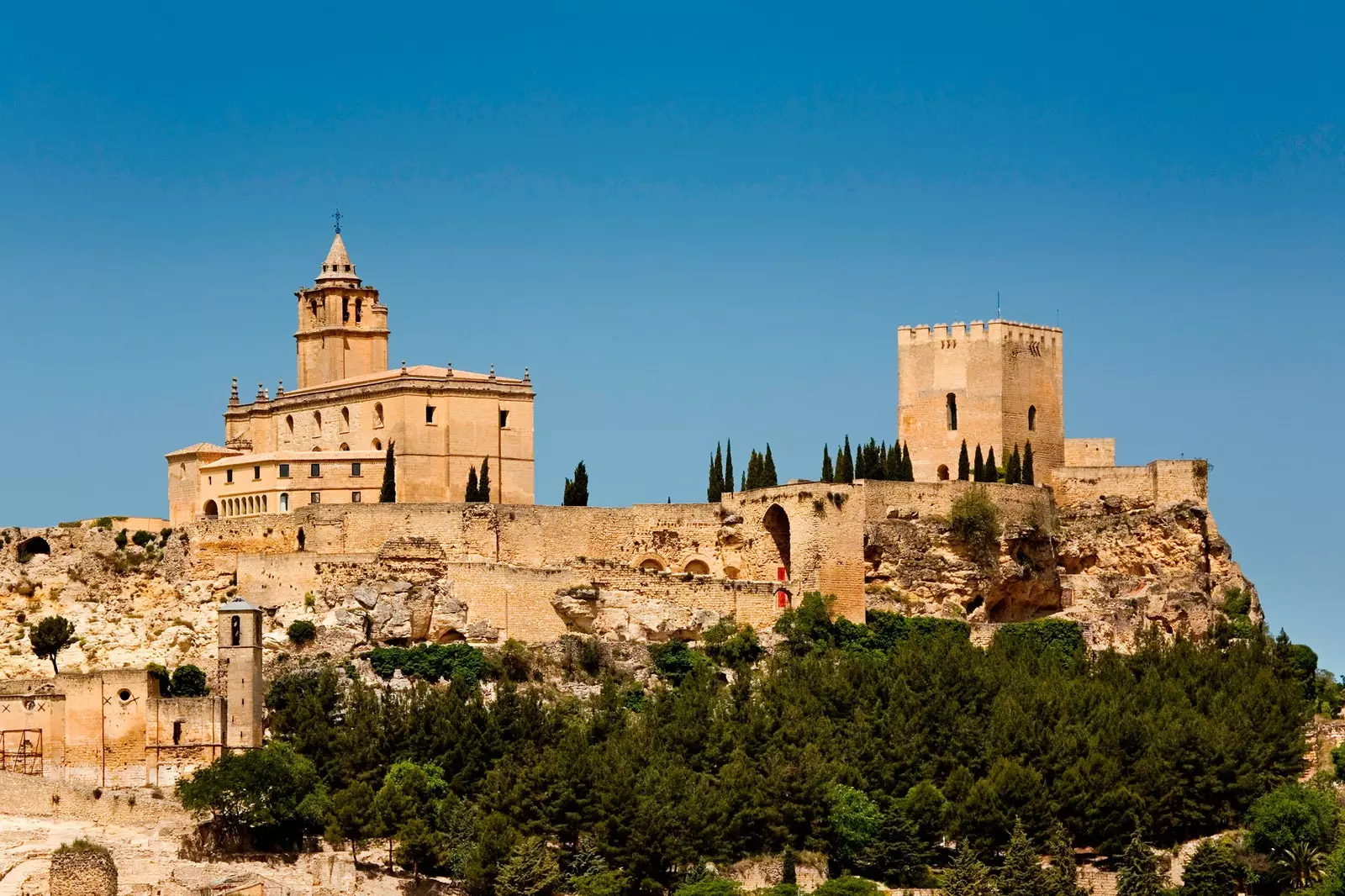
Alcalá la Real: a journey through time
To stay, we return to speak of mansions: this time of which, Since September 2020, it has been transformed into the Hotel Boutique Palacio de la Veracruz. And it has been done by the hand of José Francisco Moyano, its current owner, who reveals that as a child he used to run around the ruined building with friends.
The creak of its high ceilings, of old wooden beams, makes it clear that its years of history are still part of its essence. They recall those times when It served as a comedy corral next to a now defunct Veracruz Church.
We ended up mesmerized with its central courtyard, whose Mudejar-style details are reflected in the coffered ceiling. Also with its majestic stairs, that expose some other remains of the old stucco.
With its stylish hanging lamps and its minimalist but absolutely successful details, It has seven exclusive rooms in which taste and elegance dominate every corner. There is nothing to do: we have suffered a full-fledged stendhalazo.
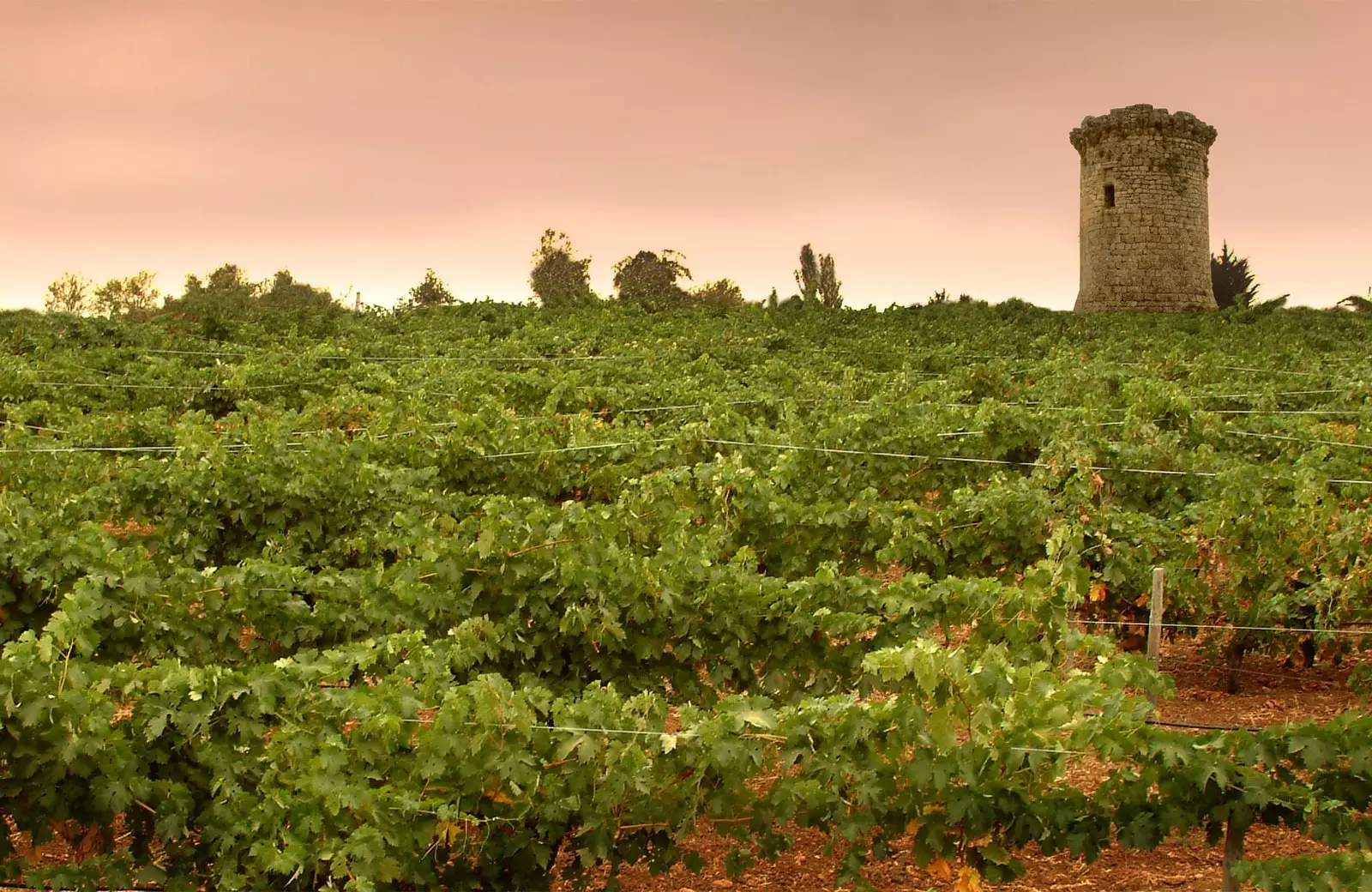
land of vineyards
WITH WINE AND CHEESE, THE WORLD IS MUCH BETTER
Marcelino Serrano knows that very well, we have no doubt. We ran into him as soon as we arrived at his winery, which is also his house, on the outskirts of Alcalá. His story is part of the historical tradition of the area, the one that already since Muslim times conquered the landscape with its vines.
Because it turns out that these lands were vineyards before olive trees, to the point that after the conquest of Granada, Juana de Castilla granted the municipality the privilege of wine : they could trade with him exclusively in Granada for three months a year.
Marcelino speaks passionately about this project while he reveals the ins and outs of the production. Already retired, but more active than ever, he fights to keep his roots alive while he remembers those years in which, together with his father, he slept in a straw hut to care for the family vineyards.
Today he speaks proudly of Blanca, his daughter, who decided to become an Agricultural Technical Engineer and graduate in Oenology to share that dream with him. They work hard, the crisis is not helping them, but there is no one to erase the smile from their faces: they are happy.
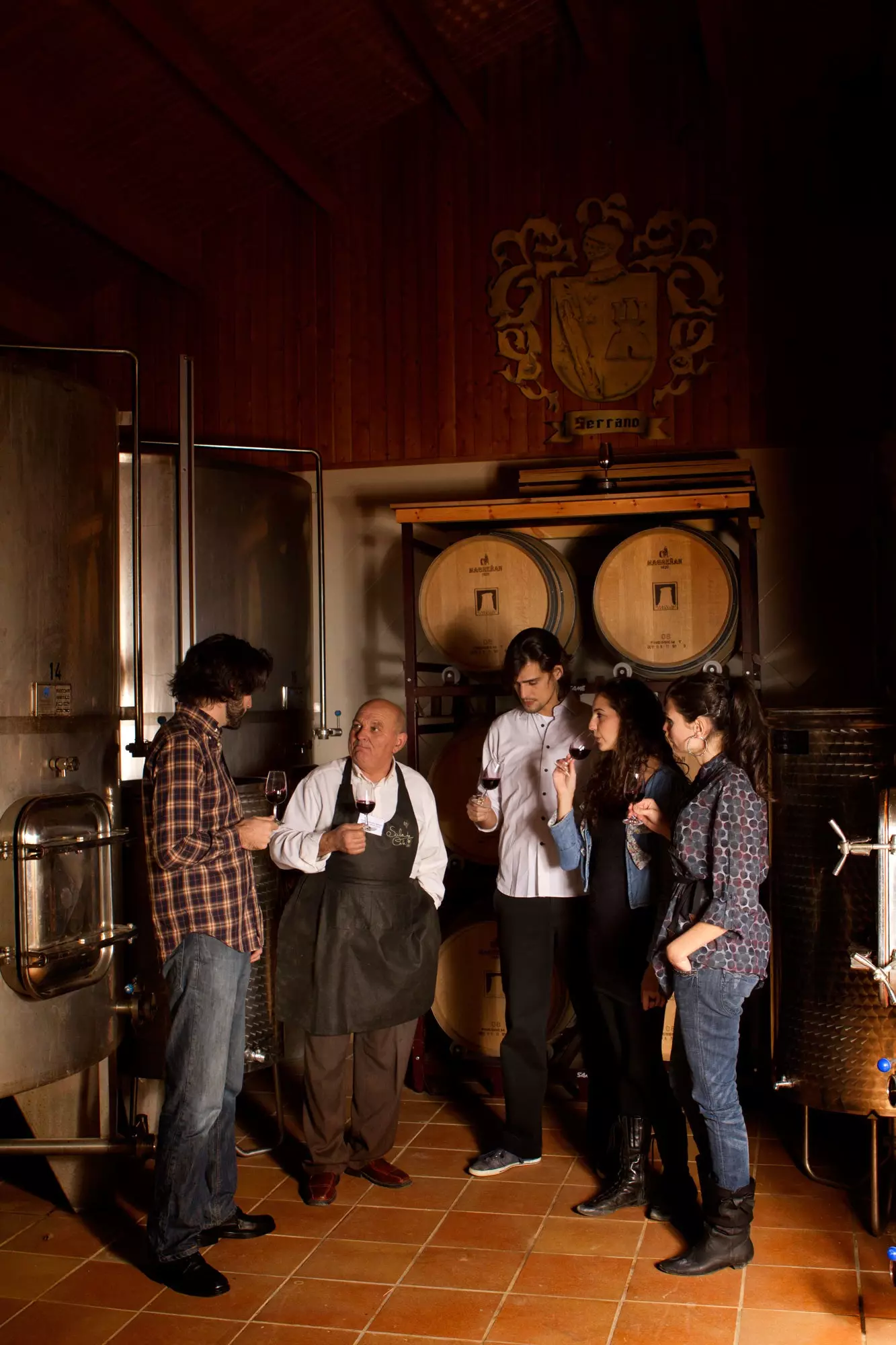
Marcelino Serrano receiving some visitors in his winery
To the experience of visiting his wineries we add, as a climax, a tasting directed by Blanca of those that become special. The emotion that she transmits in each step is contagious while he invites us to guess each tonality and each nuance.
To accompany, some artisan sausages such as Montañés: between its orza loin, its truffled turkey and its carnival stuffing, the pecking is irresistible.
The cheese, yes, from Sierra Sur, a family business with more than 25 years of history in which they make goat's milk cheeses and yogurts -also some sheep- of unrivaled quality.
The reason? Cattle graze freely on the slopes of the Sierra Sur Jaén and produce milk with incomparable attributes. With 3,500 liters transformed daily, its products include internationally awarded cheeses, such as cured goat cheese: spectacular.
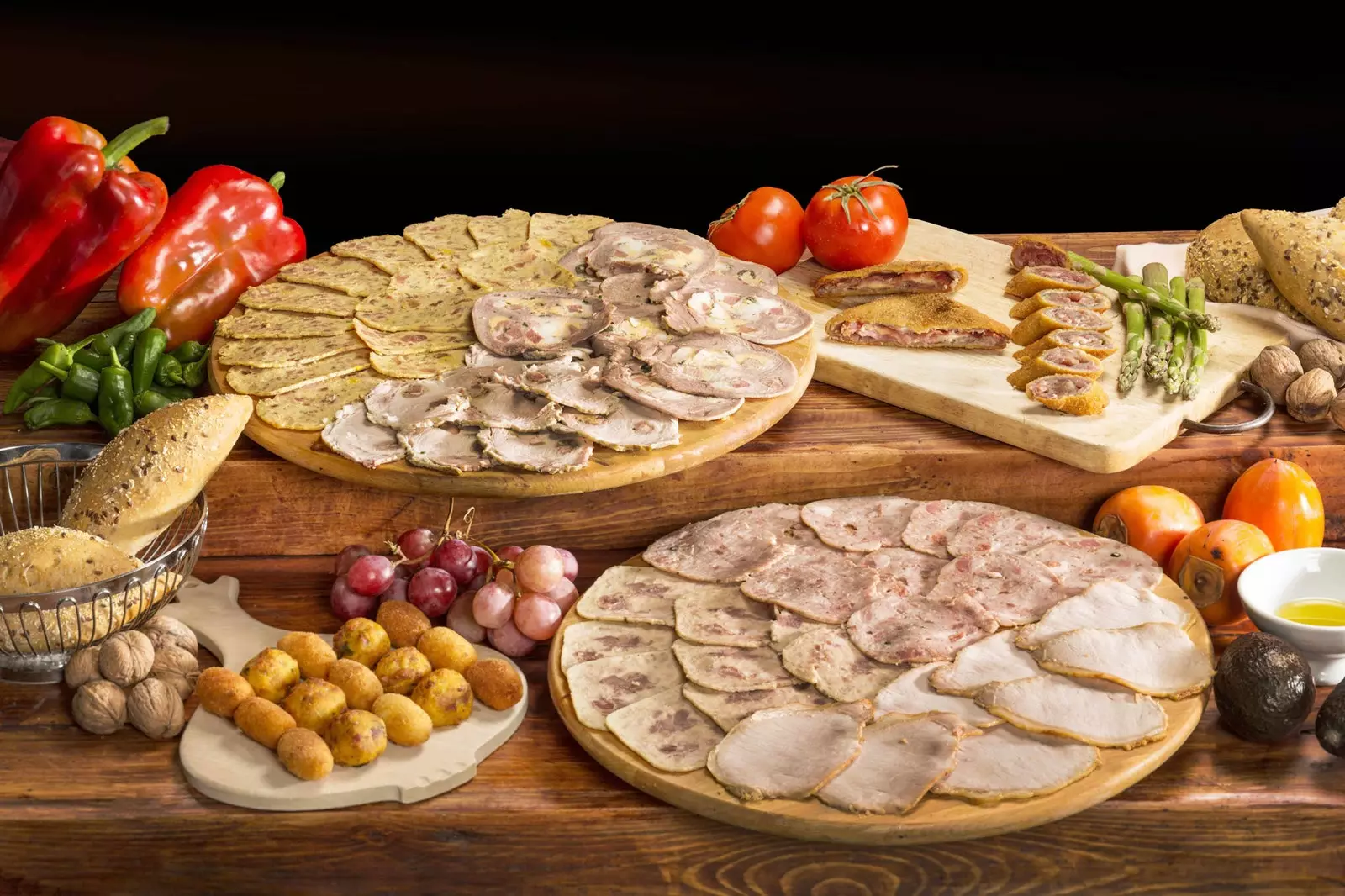
You will not be able to resist the artisan sausages
WALKING HAS BEEN SAID
We only needed to explore the mountain, and here our hearts are divided: On one side is the Río Velillos route, a linear path of about 10 kilometers that runs through the fertile plain between poplars and brambles. in which the nightingale and the common blackbird nest. The landscape, which is an absolute explosion of green in all its shades, alternates with orchards in which asparagus is one of the main protagonists.
On the other hand is the route, of extraordinary beauty, of the Sendero de Los Zumaques: a path that starts from Alcalá itself and leads to the maximum connection with nature.
The views —oh, the views— of La Mota are postcard-worthy, while surprises come and go over its 9.4 kilometres: from “El Bosque de Piedra” by Vicente Moreno, whose plot is a most unique open-air museum, to the luxuriance of sumacs and cornicabra, native plant species.
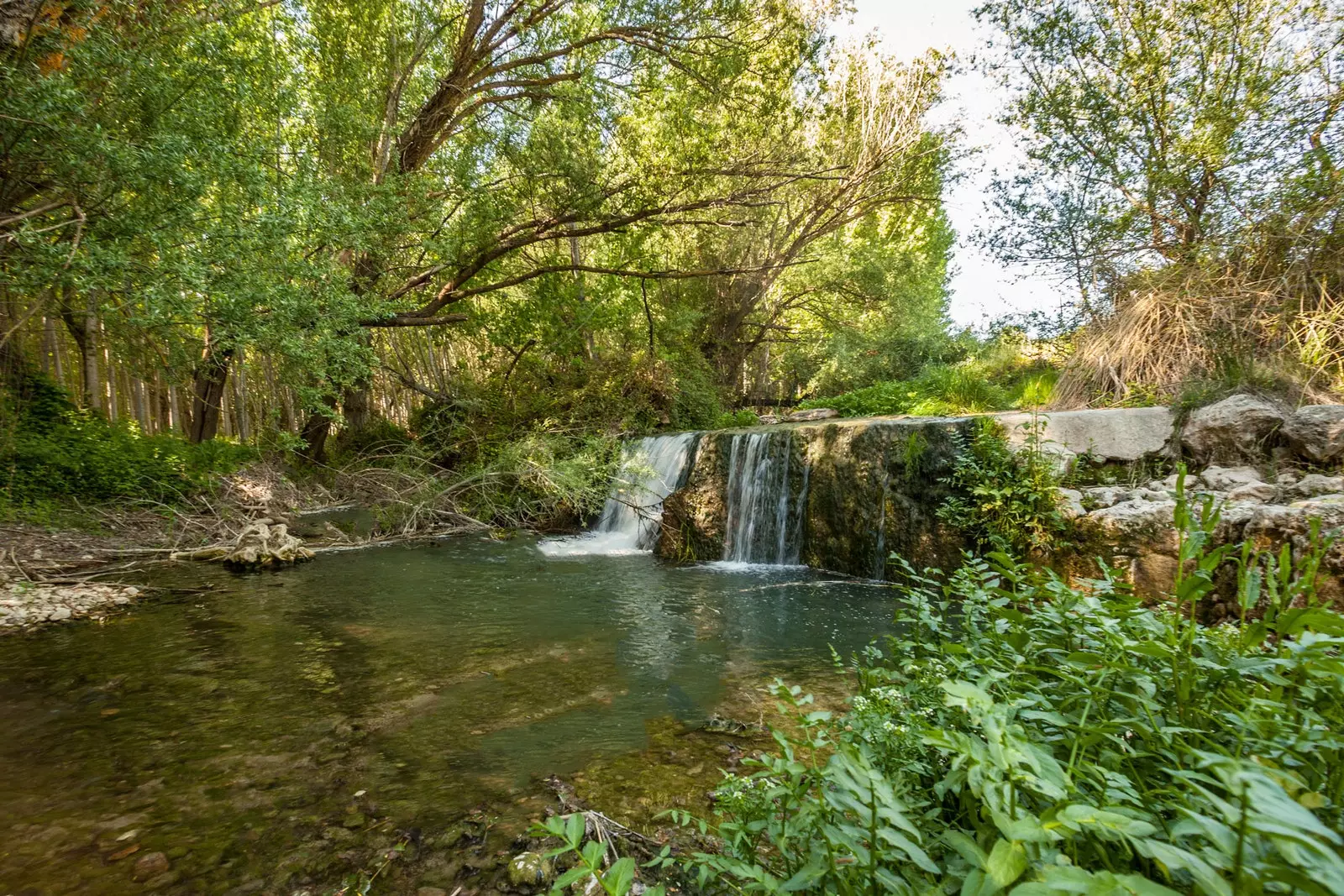
Velillos River Route
Los Tajos, on the same route, It is a geological formation where it is being valued to create an adventure park to practice from climbing to via ferrata or zip line.
It is precisely there, overlooking the peak of La Martina, —the highest in the area, 1,555 meters— , where we end this extensive route through one of the most surprising towns in Jaén.
This Frontier Land promised and fulfilled. We already sensed it upon our arrival: this was not just any place. And of course not.
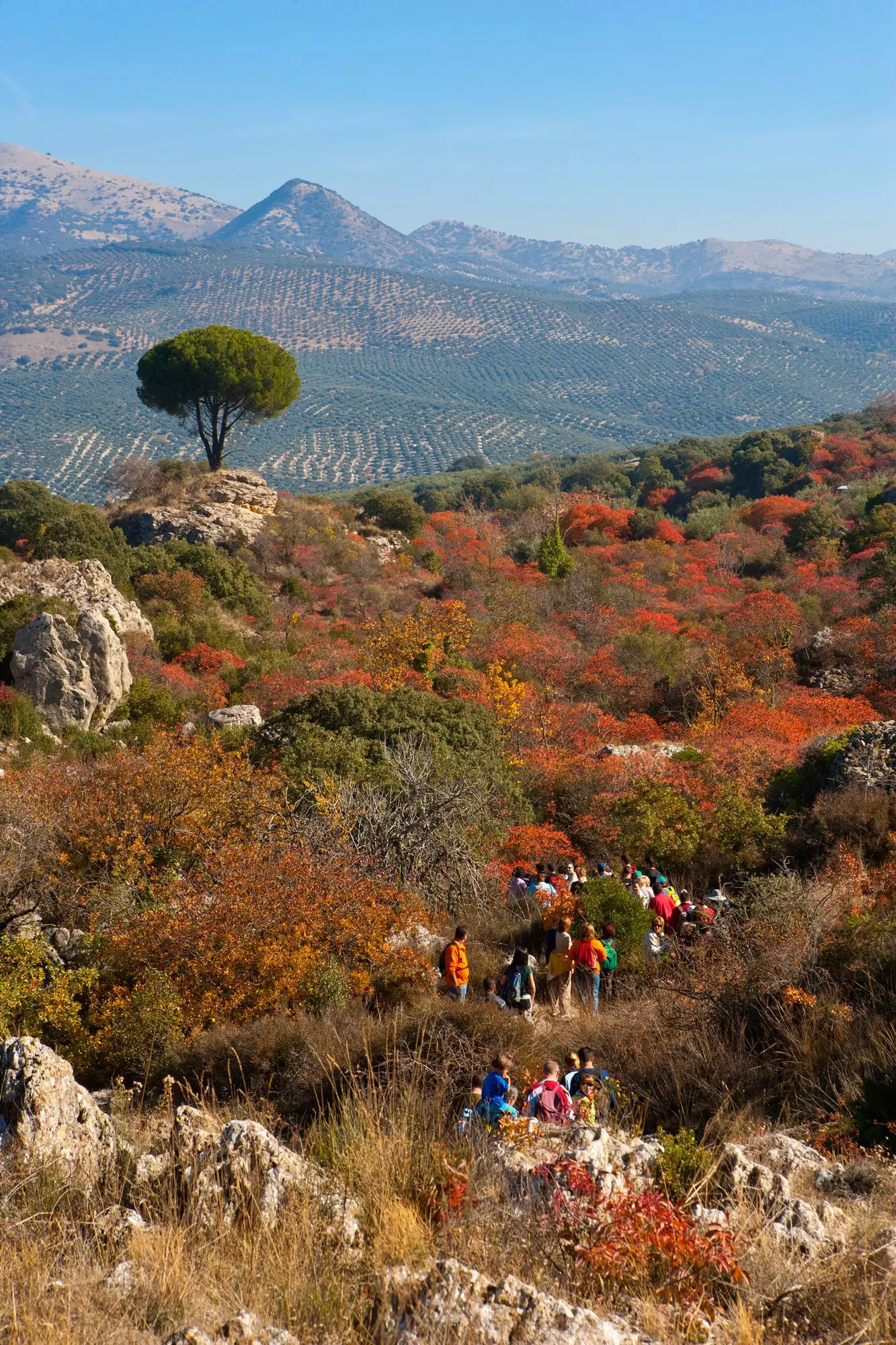
Los Zumaques Trail
